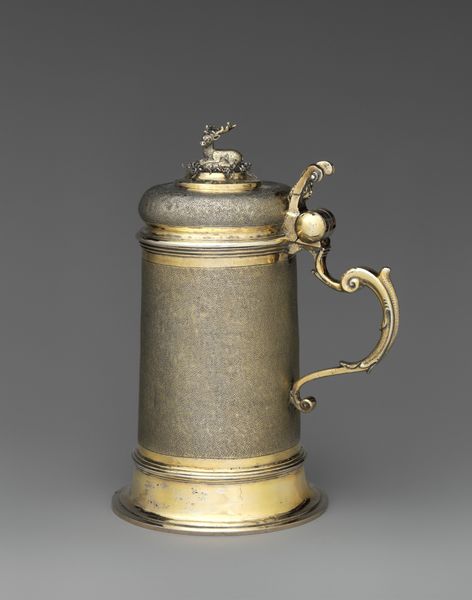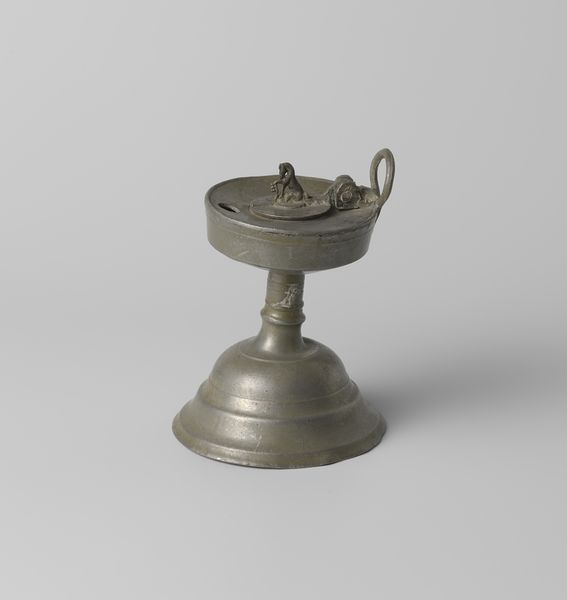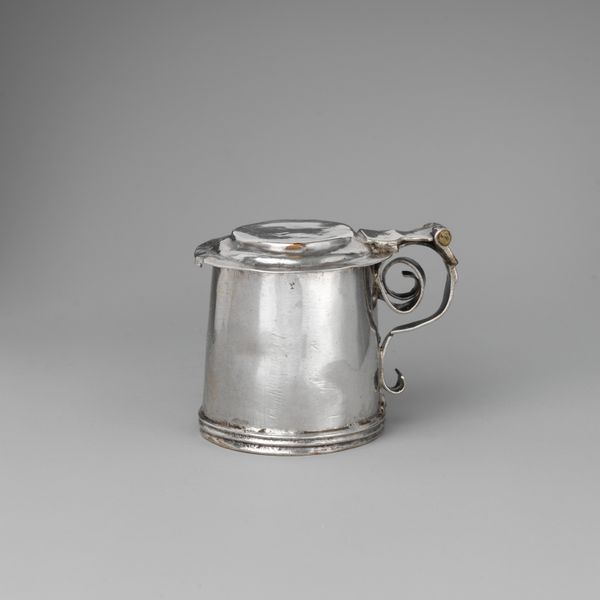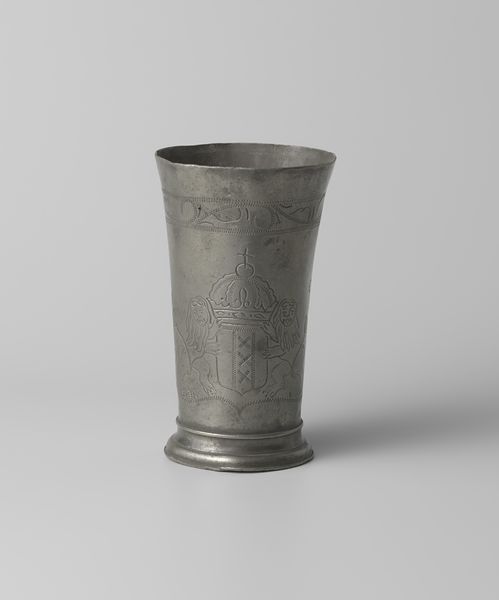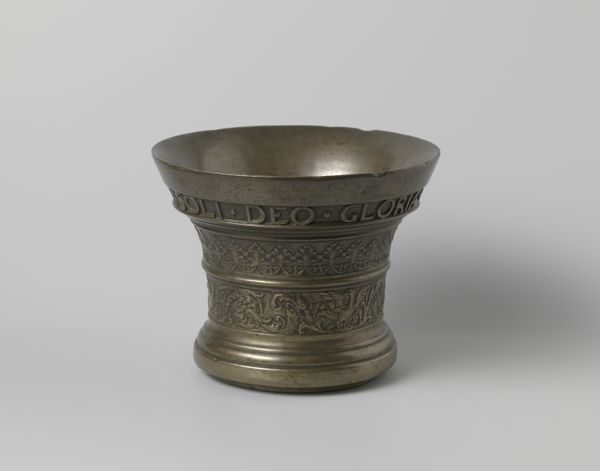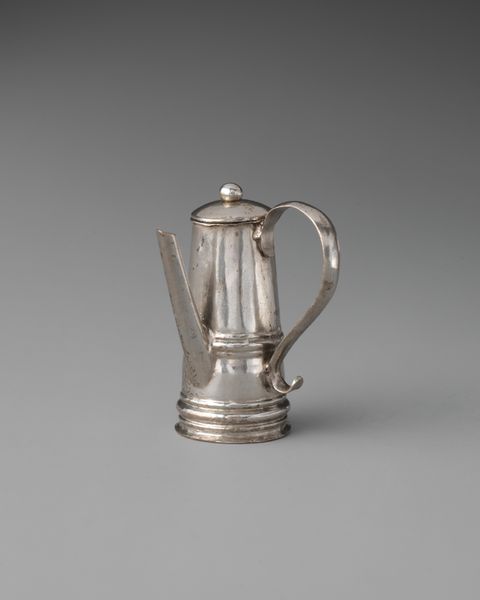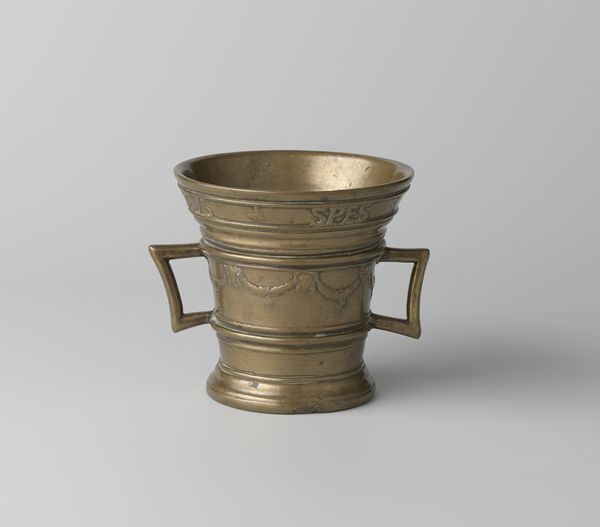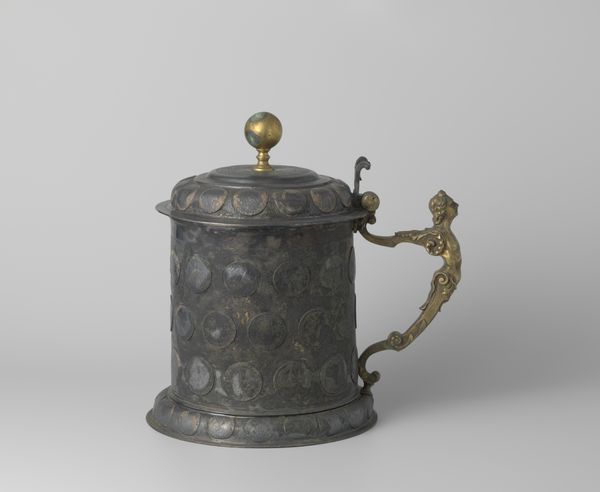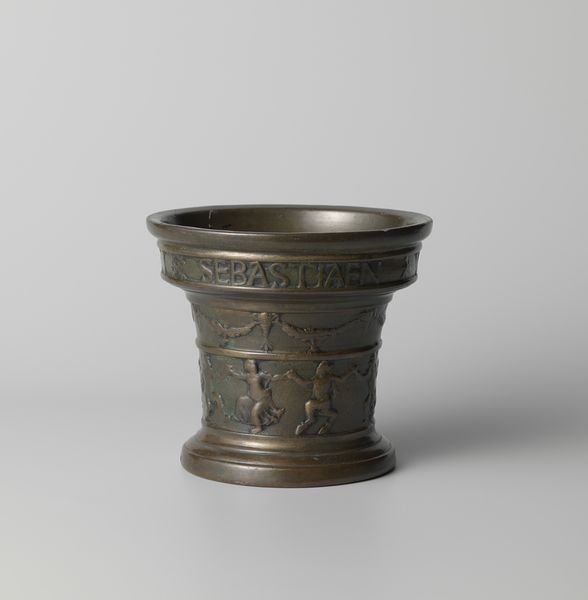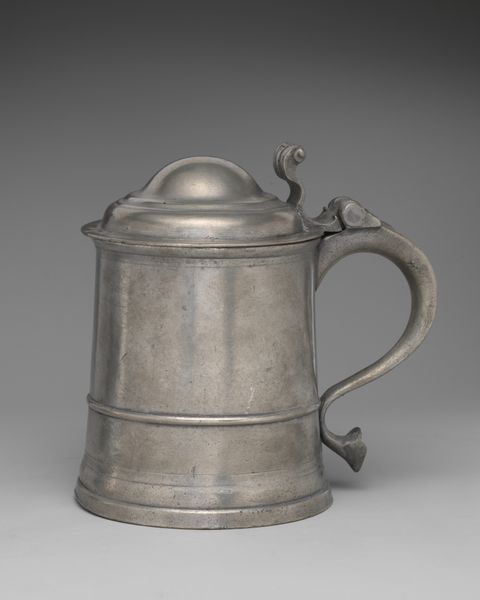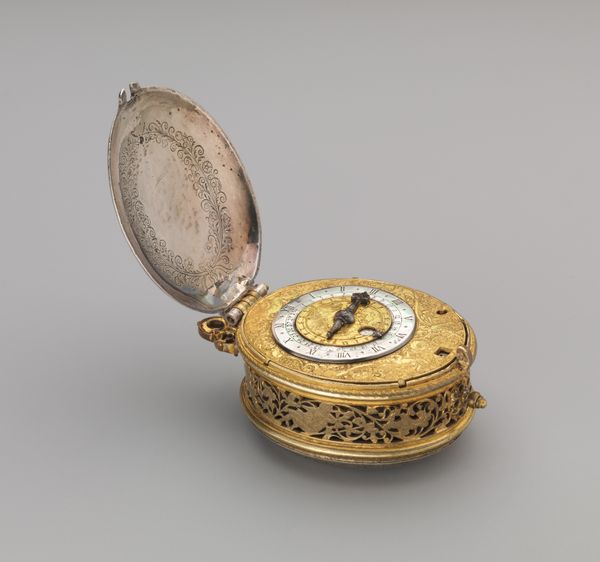
Dimensions: height 17.5 cm, width 9.4 cm, diameter 6.8 cm
Copyright: Rijks Museum: Open Domain
Editor: Here we have the "Handlantaarn," or Hand Lantern, crafted in 1787 by C.C. Grimm, primarily using metal. It gives off a beautiful gleam! What strikes me first is its strong verticality, punctuated by the circular lens and ventilation holes. What do you see in this piece? Curator: The lantern presents a fascinating study in form and function. The cylindrical volumes stacked upon one another, connected via that arm, speak to efficiency in design, wouldn’t you agree? Consider the relationship between the solid metal segments and the negative space created by the circular cutouts near the top. How does this interplay affect your reading of the object? Editor: That interplay creates a nice contrast, right? Like, heavy versus light. Is that vertical emphasis I mentioned a deliberate stylistic choice? Curator: I think so, and look closely at the surface ornamentation. Etched designs crawl over the metal, softening the severity of its industrial form. The engravings are visually engaging, don't you think? They complicate our perception of this lantern, almost imbuing it with Baroque extravagance despite its pragmatic nature. Editor: Right. Almost like a dialogue between different approaches to design and purpose. So it's more than *just* a lantern, it seems! Curator: Precisely. The visual qualities suggest much broader applications to its analysis and reception. Editor: I now have a better appreciation for how form and function aren't necessarily separate, but they influence and build upon one another. Thanks! Curator: A rewarding experience, indeed. The Handlantaarn serves as a microcosm for observing artistic intentionality in material culture.
Comments
No comments
Be the first to comment and join the conversation on the ultimate creative platform.

